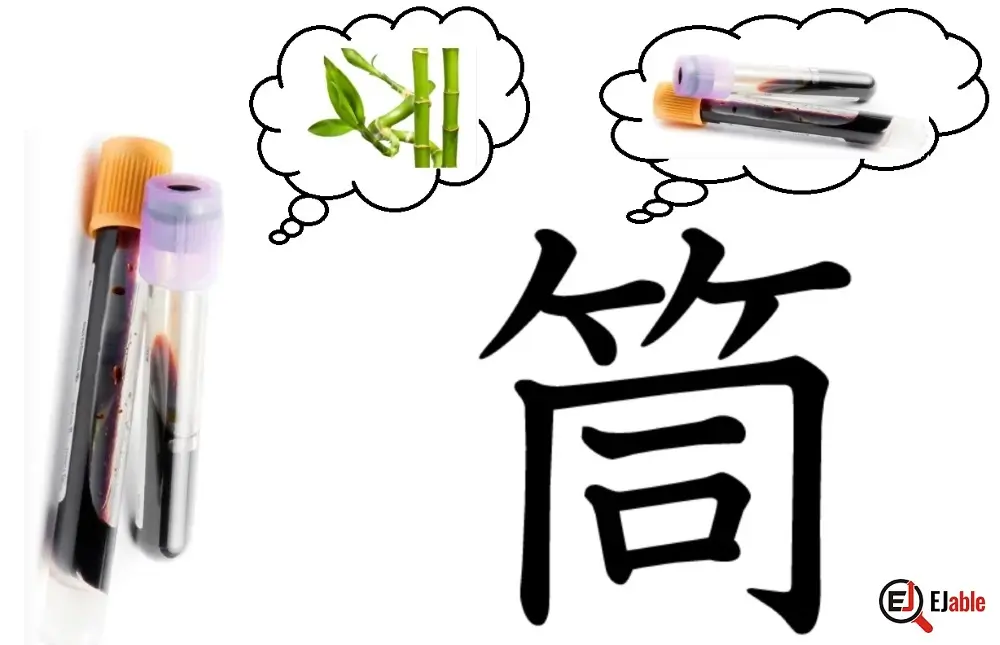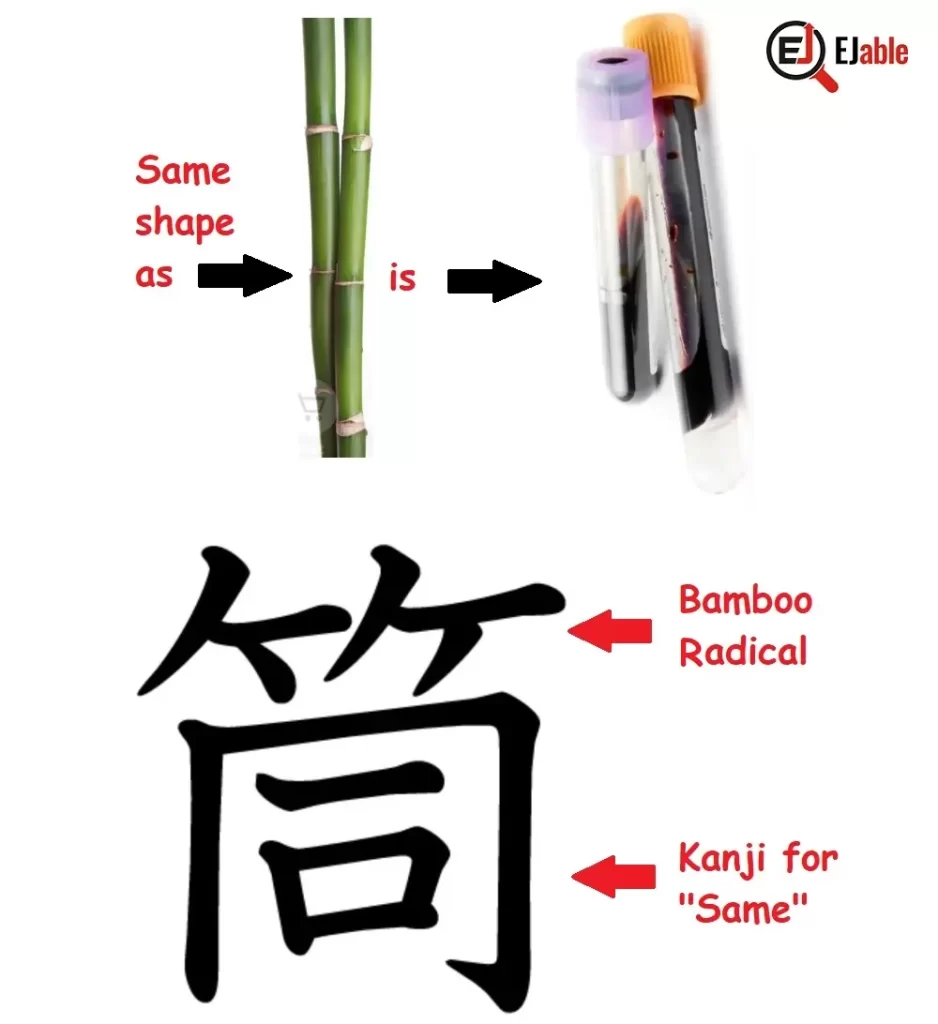Kanji for “Tube” or “Cylinder”: 筒 (Tsutsu)

The Japanese kanji for “Tube”, “Cylinder”, or Barrels is 筒. The Kunyomi or the Japanese pronunciation of the Kanji 筒 is “tou” (トウ), and the Onyomi (Chinese) pronunciation is “tsutsu” (つつ).
筒 refers to any long, hollow object with a circular cross-section.
The Kanji 筒 is used to describe objects like a mailing tube, a cylindrical container, a sleeve, or even a gun barrel in specific contexts. This Kanji is also used to describe objects ranging from concrete tubes to abstract “tubes” like tunnels or sleeves in clothing.
Please note that although the Kanji 筒 represents objects with tubular shapes, it does not represent long pipes used for conducting fluid or gasses, etc. The Kanji for a pipe and tube handling material is 管.
Tube’s Kanji 筒 is part of JLPT N2 and is taught in grade 8 in Japanese schools.
Construction of the Kanji 筒
The Kanji 筒, representing tubular objects like cylinders, tubes, or a barrel is constructed with 12 strokes and has the following components:
- Kanji radical for Bamboo (⺮)
- Kanji for “same” 同
(Note: You can read about the difference between Kanji radicals and sub-components in our guide to common Kanji radicals.)
Origin of 筒 (Kanji for Tube or Cylinder)
The kanji 筒 for tube, cylinder, or barrel originally depicted a bamboo tube or a cylindrical container made of bamboo.
As mentioned above, 筒 is composed of the bamboo radical 竹 on the top and 同 at the bottom. The bamboo radical indicates the material, as bamboo was commonly used in ancient times for making tubes, containers, and pipes.
Mnemonic: How to Remember the Kanji 筒 for “Tube” or “Cylinder”
It is very easy to remember the Kanji for a tube or cylinder if you remember the Kanji for “same” (同). Think of the bamboo radical indicating the shape, and the sub-component 同 indicating the sameness of the object as a bamboo.
The following picture serves as a mnemonic to remember this Kanji by showing the logic behind it:


Cultural and Historical Significance
The construction of 筒 reflects ancient practices. Bamboo, represented by the top part 竹, was a prevalent material in traditional East Asian societies due to its versatility and strength. Bamboo tubes were used for various purposes, from containers to musical instruments.
The choice of bamboo in the kanji’s design signifies the material and cultural importance of bamboo in Japan, where it symbolizes strength, flexibility, and purity.
Kanji for a Tube or Tubular Objects in Compounded Words
The kanji 筒 also appears in compound words and phrases, broadening its application. There are 16 Japanese words that begin with the Kanji 筒, and it appears in 57 words.
The following are the examples of the compounded words using the Kanji of “tube” or tubular objects:
- 郵便筒 (ゆうびんとう, yūbintō): Mailbox, postbox.
- 筒切れ (つつぎれ, tsutsugire): A piece of bamboo tube.
- 筒抜け (つつぬけ, tsutsunuke): Going in one ear and out the other; also, something that is hollow.
- 筒状 (つつじょう, tsutsujō): Tubular, in the shape of a tube.
- 手紙筒 (てがみつつ, tegamitsutsu): Mailing tube.
- 筒袖 (つつそで, tsutsusode): Tube sleeves, referring to a type of traditional Japanese clothing with cylindrical sleeves.
- 火薬筒 (かやくつつ, kayakutsutsu): Powder keg or powder tube.
- 筒先 (つつさき, tsutsusaki): The tip or end of a tube.
- 筒入れ (つついれ, tsutsuire): Tube case or sheath.
- 筒状花 (つつじょうか, tsutsujōka): Tubular flower.
These examples are more accurately focused on objects or concepts directly associated with tubes, cylinders, or hollow shapes, illustrating the practical and literal use of 筒 in various contexts.
Check other Kanji characters on the page “How to Remember Kanji“. You may also like to read about the common Kanji radicals.


A long-term ex-pat in Japan, Himanshu comes with an IT background in SAP consulting, IT Business Development, and then running the country operations of an IT consulting multinational. Himanshu is the co-founder and Managing Director of ReachExt K.K. and EJable.com. He is also an Advisory Board Member of a Silicon Valley AI/IoT startup.

